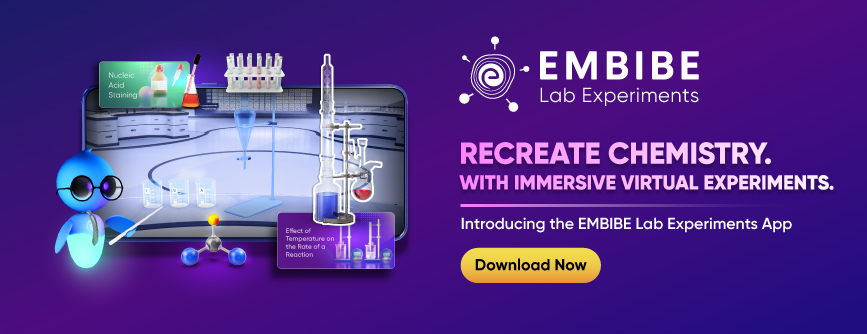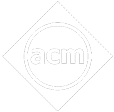- Written by aparna
- Last Modified on 11-12-2024
Manipur Board Class 11 Exam 2025
The Manipur Council of Higher Secondary Education was established in 1992 under the Manipur Higher Secondary Act of 1992. The Council amalgamated the +2 courses of the Manipur Board of Secondary Education into higher secondary courses under the Manipur Council of Higher Secondary Education (COHSEM).
The main goal of the Council is to make Manipur students compete with national students in terms of education and skills. The Board works to educate and train the youth. It also provides online services through which students can check their results, download registration forms, check the date sheet, download admit cards, and so on.
 https://embibe-experiments.app.link/satngXzRGyb
https://embibe-experiments.app.link/satngXzRGyb
Manipur Board Class 11 Exam Summary
The Manipur Board Class 11 Exam is an important academic milestone for students studying in Manipur. The exam is conducted by the Council of Higher Secondary Education, Manipur (COHSEM) to evaluate the knowledge and understanding of students in various subjects, including Physics, Chemistry, Mathematics, and Biology.
The exam is usually held in the month of March and the results are typically declared within a few weeks. The respective school authorities announce the results. Students who pass the exam are eligible to continue their studies in Class 12 and pursue various academic and professional courses. The Manipur Board Class 11 Exam is a crucial step in a student’s academic journey, and it requires dedicated preparation and focused study to achieve good results.
Manipur Board Official Website
https://cohsem.nic.in
Manipur Board Class 11 Syllabus 2025
One of the primary ways for students to succeed in Manipur Board Class 11 exams is to understand the syllabus structure thoroughly. Understanding the syllabus and marking scheme enables students to use their study time best and plan out their studies.
Manipur 11th syllabus is very important in a student’s higher secondary education because it provides a complete education system based on the syllabus. Recently, the Manipur Board has adopted the NCERT syllabus for Class 11 Science streams subjects such as Maths, Physics, Chemistry, and Biology.
To view or download the syllabus of other subjects, check the links given in the table below:
For a complete syllabus of Manipur Board Class 11 syllabus, click here.

Manipur Board Class 11 Exam Blueprint
The blueprint is a matrix or chart that describes the number and type of test questions represented across the content area topics in accordance with the learning objective and the relative weight on the test given to each topic. The blueprint provides students with a clear framework for creating items that assess the important concept or thinking skill listed in the test blueprint.
Manipur Board Class 11 English Blueprint
Here is the Manipur Board Class 11 exam blueprint for English:
| Weightage To Content |
| |
UNIT/CONTENTS: |
Marks |
| A. |
Reading |
Unseen passage(Comprehension) |
12 |
| Unseen passage (Note making/Summarizing) |
4+4 |
| B. |
Writing |
Advertisement/Message |
3 |
| News-Report/Magazine Report |
8 |
| Letter Writing(Personal/Application) |
8 |
| Functional Grammar |
4 |
| Amplification/ Symposium |
4 |
| Essay/ Debate/Speech/Article |
8 |
| C. |
Text |
Prose |
19 |
| Poetry |
12 |
| Supplementary reader |
14 |
| Total |
100 |
Manipur Board Class 11 Mathematics Blueprint
The Manipur Board Class 11 Maths blueprint will help students understand the exam pattern. In the table below, we have provided the blueprint for Class 11 Maths of Manipur Board.
| Units |
Unit-wise Weightage |
Marks |
| I. |
Sets, Relations and Functions |
|
| 1. Sets, Relations and Functions |
13 |
| 2. Trigonometric Functions |
16 |
| II. |
Algebra |
|
| 1. Complex Number, Quadratic Equations and Linear Inequalities |
13 |
| 2. Permutations, Combinations, MATHEMATICAL INDUCTION and 15 27 Binomial Theorem |
15 |
| 3. Sequence and Series |
9 |
| III. |
Coordinate Geometry |
|
| 1. Straight Lines |
6 |
| 2. Circle, Conic Section and Introduction to 7 13 Three-dimensional Geometry |
7 |
| IV. |
Calculus |
|
| Limits and Derivatives |
6 |
| V. |
Mathematical Reasoning |
3 |
| VI. |
Statistics and Probability |
12 |
| |
Total |
100 |
Manipur Board Class 11 Physics Blueprint
The Manipur Board Class 11 Physics blueprint is aimed at helping the students get a proper understanding of the learning schedule. Refer to the table below for Manipur Board Class 11 Physics blueprint:
| Unit |
Contents |
Marks |
| I |
Physical World and Measurement |
03 |
| II |
Kinematics |
10 |
| III |
Laws of Motion |
10 |
| IV |
Work, Energy and Power |
06 |
| V |
Motion of System of Particles and Rigid Body |
06 |
| VI |
Gravitation |
05 |
| VII |
Properties of Bulk Matter |
10 |
| VIII |
Thermodynamics |
05 |
| IX |
Behaviour of Perfect Gas and Kinetic Theory |
05 |
| X |
Oscillations and Waves |
10 |
| Total |
70 |
Manipur Board Class 11 Physics Practical Blueprint
| Sl. No. |
Forms of exercise |
Nature of Exercise |
Skill/Objective to be tested |
Marks Allotted |
| O.S. |
M.S |
D.S |
R.S |
R.U |
| 1. |
Short |
Theory (Principle/ working formula/ illustration diagrams |
0 |
0 |
1/0 |
3/4 |
0 |
4 |
| 2. |
Short |
Setting of instruments and using them. |
0 |
2 |
0 |
0 |
2 |
4 |
| 3. |
Major Experiment |
Experimental procedure, tabulation, etc. |
2 |
2 |
0 |
0 |
0 |
4 |
| 4. |
Short |
Reading of measurement |
2 |
0 |
0 |
2 |
0 |
4 |
| 5. |
Short |
Viva-Voce |
0 |
0 |
0 |
0 |
4 |
4 |
| 6. |
Sessional Record |
Practical Note Book |
1 |
1 |
1 |
1 |
1 |
5 |
| 7. |
Sessional
Record |
Record of one activity |
1 |
1 |
1 |
1 |
1 |
5 |
| |
6 |
6 |
3/2 |
7/8 |
8 |
30 |
Manipur Board Class 11 Chemistry Blueprint
In the table below, students can check the Manipur Board Class 11 Chemistry blueprint thoroughly. For further information, we have also provided the blueprint for practical exam as well.
| Weightage to Contents |
| Unit/Contents |
Marks |
| 1 |
Some basic concepts of Chemistry |
18 |
| 2 |
Structure of Atom |
| 3 |
Classification of Elements and Periodicity in Properties |
| 4 |
Chemical Bonding and Molecular Structure |
| 5 |
States of Matter: Gases and Liquids |
16 |
| 6 |
Thermodynamics |
| 7 |
Equilibrium |
| 8 |
Redox reactions |
18 |
| 9 |
Hydrogen |
| 10 |
s – Block elements |
| 11 |
Some p-block elements |
| 12 |
Organic Chemistry: Some Basic Principles and Techniques |
18 |
| 13 |
Hydrocarbons |
| 14 |
Environmental chemistry |
| Total |
70 |
Manipur Board Class 11 Chemistry Practical Blueprint
| Evaluation Scheme for Examination |
Marks |
| A. |
Volumetric Analysis |
10 |
| B. |
Salt Analysis |
8 |
| C. |
Content-Based Experiment |
6 |
| D. |
Class Record and Viva |
6 |
| Total |
30 |
Manipur Board Class 11 Biology Blueprint
Check out the table below for Manipur Board Class 11 Biology blueprint. We have also provided the blueprint for Biology practicals.
| Unit |
Topics |
Marks |
| I. |
Diversity of Living Organisms |
07 |
| II. |
Structural Organisation in Plants and Animals |
12 |
| III. |
Cell: Structure and Function |
15 |
| IV. |
Plant Physiology |
18 |
| V. |
Human Physiology |
18 |
| Total |
70 |
Manipur Board Class 11 Biology Practical Blueprint
| Evaluation Scheme for Examination |
Marks |
| 1. |
Experiments and spotting |
20 |
| 2. |
Record of one investigatory Project and Viva based on the Project. |
5 |
| 3. |
Class-record and Viva based on the experiments. |
5 |
| Total |
30 |

Manipur Board Class 11 Study Plan to Maximise Score
It is always better to be proactive and well-prepared for examinations rather than wait until the last minute and cram everything. Students should make a study plan and study accordingly to maximise their scores.
So, if the students are Class 11th student appearing for the Manipur Board Examination, then make sure to follow this study plan to ensure success. In the sections below, students can find detailed study plans and preparation tips.
Manipur Board Class 11 Preparation Tips
Following the preparation tips properly can be a great way to score good marks in the exam and stay ahead of your peers. Students who will be taking the Manipur Board Class 11 exam in 2025 should follow the preparation tips given below to prepare for their exams effectively:
- Know the Exam Format: Don’t forget to inquire about the exam with your teacher. Understanding the format will help you prepare effectively. If the exam is made up of multiple-choice questions, you should study flashcards and be familiar with vocabulary, facts, and dates. If the exam is more essay-based, practice writing answers and points related to the topic you prepared about important topics that you have learned throughout the year.
- Create a Study Plan: It is critical to have a plan for how you will study. Check to see if it’s a realistic goal that you can stick to. Consider all of your exams, devoting more time to those that are more difficult or that require a higher score. Also, make time for meals and sleep, as well as study breaks throughout the day.
- Utilise Study Material from Teachers: If you are given a study guide, a practice exam, or model papers, make sure to complete them during your study time slots. Remember that the teachers who created these study materials also taught or guided many of the other students who took this exam.
- Practice previous year question papers: Practicing previous year question papers is an effective way to prepare for exams. This helps in understanding the exam pattern, identifying the important topics, and also helps in improving time management skills.
- Stay organized: Students should keep their study materials organized to avoid any last-minute panic. They should keep their notes, textbooks, and other study materials in one place.
Manipur Board Class 11 Detailed Study Plan
Along with the preparation tips, students can use the comprehensive study plan below to strengthen their exam preparation. A detailed study plan ensures that the students can learn all the aspects and eventually score good marks on the exam. Below we have provided the Manipur Board Class 11 detailed study plan:
- Class 11 and 12 are critical years in a student’s life. However, with the newly founddom from attending senior school, students tend to ignore their studies for a short period and luxuriate in life. As a result, many students put off taking Class 11 until it’s too late.
- Students who want to be engineers or doctors can’t afford to ignore Class 11. The category 11 syllabus for Physics, Chemistry, Maths, and Biology is included in popular engineering and medical entrance exams such as JEE Main, JEE Advanced, BITSAT, NEET, and AIIMS.
- Physics, Chemistry, Maths, and Biology in Class 11 are very different from what you studied in Class 10. The level of difficulty varies greatly. New chapters, concepts, and topics have been added to the Class 11 syllabus, and each concept and topic has been expanded. Therefore, students must have a deeper understanding of the subject matter to score well.
- In addition, compared to Class 10, Class 11 requires significantly more knowledge of theories, formulas, visualisations, etc. Furthermore, the questions asked in the exams are no longer direct. As a result, students must plan accordingly.
FAQs on Manipur Board Class 11
Here are some of the most frequent questions on the Manipur Board Class 11 Exam:
Q: Is Class 11 important?
Ans: Class 11 is an important year for top school students because it is here that they lay the groundwork for all of the important topics they will cover in their 12th exams. Students must know Class 11 important questions while writing their exams to prepare for their final exams.
Q: What are the eligibility requirements for Manipur students to take the Class 11 examinations?
Ans: Students who have enrolled in Class 11 after passing the Class 10 exam are eligible to take the Class 11 exam. Furthermore, they must attend the class regularly.
Q: Should I take Science in Class 11?
Ans: We must all study and pass the 11th standard to be successful in our studies, whether in law, engineering, or journalism. Thus, selecting the right stream in Class 11 is critical because it establishes the path for our future educational courses. Science is one of the streams from which to choose.
Q: Is the Manipur Class 11 exam conducted online or offline?
Ans: The Manipur Board 11th class exam is taken offline (pen and paper). Students receive home centres because they take the exam at their own schools.
Q: Is 11th Chemistry subject very tough?
Ans: Yes, if not studied properly, it becomes difficult; otherwise, it is the easiest subject. The syllabus is given above, students may refer to it and prepare.
Manipur Board Class 11 List of Educational Institutes
Education is the only way for us to gain knowledge, skill, information, and technique, as well as become aware of our rights and responsibilities to our family, society, and the nation.
The list of a few schools in Manipur is as follows.
| No. |
Name of the School and Location |
| 1 |
Thomas Memorial School, Kamphasom, UKL |
| 2 |
A. Jalil High School, Khergao |
| 3 |
A. Rudra High School, Tronglaobi, Moirang |
| 4 |
Abdul Ali High Madrassa, Lilong |
| 5 |
Achan English School, Ukhrul |
| 6 |
Achanbigei High School, B.P.O. Achanbigei |
| 7 |
Adimjati High School, Imphal |
| 8 |
Adimjati Little English School, Imphal |
| 9 |
Advance Learner School, Heirok |
| 10 |
Advance Public School, Moirang |
| 11 |
Agape High School, Sangaikot |
| 12 |
Aimol Chingnunghut High School, Chandel |
| 13 |
Ajad English School, Nambol |
| 14 |
Akhui High School, Tamenglong |
| 15 |
Al – Eddeen English School, Heibong Makhong , Imphal |
The entire list along with other details can be accessed using the link: List of Schools in Manipur.
Manipur Board Class 11 List of Future Exams
After Class 11, one will enter life's most significant turning point, Class 12. One should focus primarily on their goals and achieve high marks in their respective fields.
So, in this section, we will provide detailed coaching for the competitive exams that you will need to take after graduating from high school, particularly if you want to become a doctor or an engineer.
The following are the important competitive exams that students must take after graduating from high school:
| Stream |
Exam |
| Engineering |
Joint Entrance Examination (JEE) Main
JEE Advanced
Birla Institute of Technology and Science Admission Test (BITSAT) entrance exam
IPU-CET (B. Tech)
Manipal (B. Tech)
VITEEE
COMEDK
State-level Engineering Entrance Tests |
| Medical |
National Eligibility Cum Entrance Test (NEET)
AIIMS
JIPMER |
| Fashion and Design |
National Institute of Fashion Technology (NIFT) Entrance Test
National Institute of Design Admissions
All India Entrance Examination for Design (AIEED)
Symbiosis Institute of Design Exam
Maeer’s MIT Institute of Design
National Institute of Fashion Design
National Aptitude Test in Architecture
Center for Environmental Planning and Technology (CEPT) |
| Defence Services |
Indian Maritime University Common Entrance Test
Indian Navy B.Tech Entry Scheme
Indian Army Technical Entry Scheme (TES) ·
National Defence Academy and Naval Academy Examination (I) |
| Mathematics |
Indian Statistical Institute Admission
Admissions to Universities
Various B.Sc Programs
Banasthali Vidyapith Admission |














































